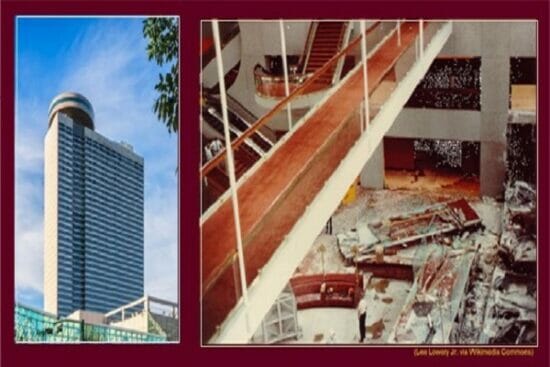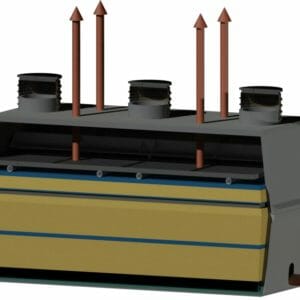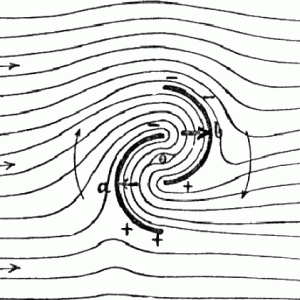E – 2017 Engineering Ethics: The Hyatt Regency Skyways Collapse; Engineering Errors and Ethical Issues
$75.00
Courses Included
On July 17, 1981, just after 7;00 PM, two skywalks hanging from the ceiling in the Hyatt Regency Hotel in Kansas City, Missouri, collapsed. One hundred fourteen people perished and 216 were injured, some very seriously. The skywalks were simply-supported at each end. Between the end supports, the skywalks were hanging from the roof framing of the lobby by six threaded rods. The original design of the connection was to use one threaded rod at each location to collect the reactions from both skywalks, one located above the other. But the fabricator changed the design and had a rod connecting the lower skywalk to the girder in the upper skywalk, and another threaded rod to connect the upper skywalk to the roof framing. This change resulted in the connection of threaded rod in the upper skyway to carry twice the load it was carrying in the original design.
The post-collapse investigations indicated that the changed threaded rod connections in the upper skywalk failed first and that skywalk collapsed on the lower skywalk, and together they fell on the floor of the atrium. The investigations also revealed that the original design of the failed connections was barely sufficient to carry the weight (i.e., dead load) of the skywalks. The changed design of the connection in the upper skywalk could carry barely half of the design load.
The webinar, first, will present the engineering aspects of the case. Then, in the second part will focus on the engineering ethics issues regarding the lack of compliance on the part of the structural engineer of the record as well as the fabricator, with the 1st Canon of the Code of Ethics for Engineers, which states: Engineers, in the fulfillment of their professional duties, shall “Hold paramount the safety, health, and welfare of the public.” Engineers who designed the original connection did not hold safety paramount. The fabricator’s engineer who did the design change for the connection also did not respect the first Canon to hold safety paramount. And, the final fatal engineering ethics violation was by the structural engineer of the record, that apparently without checking the adequacy of the changed connection detail approved it for construction. The two structural engineers who were responsible for the design lost their P.E. license in Missouri and Texas on the order of an administrative judge.
The webinar will have a discussion on the difference between the professional ethics codes and the laws governing the actions of the professional engineers. The last part of the webinar will present the lessons that were learned, or not learned, from this tragic event and what changes were implemented in engineering codes and standards, to prevent such tragedies.
The webinar concludes that if the engineers in charge of the structural design, fabrication, and inspection of the skywalks had followed the 1st Canon of Code of Ethics and held safety paramount, the tragic collapse would not have occurred.






